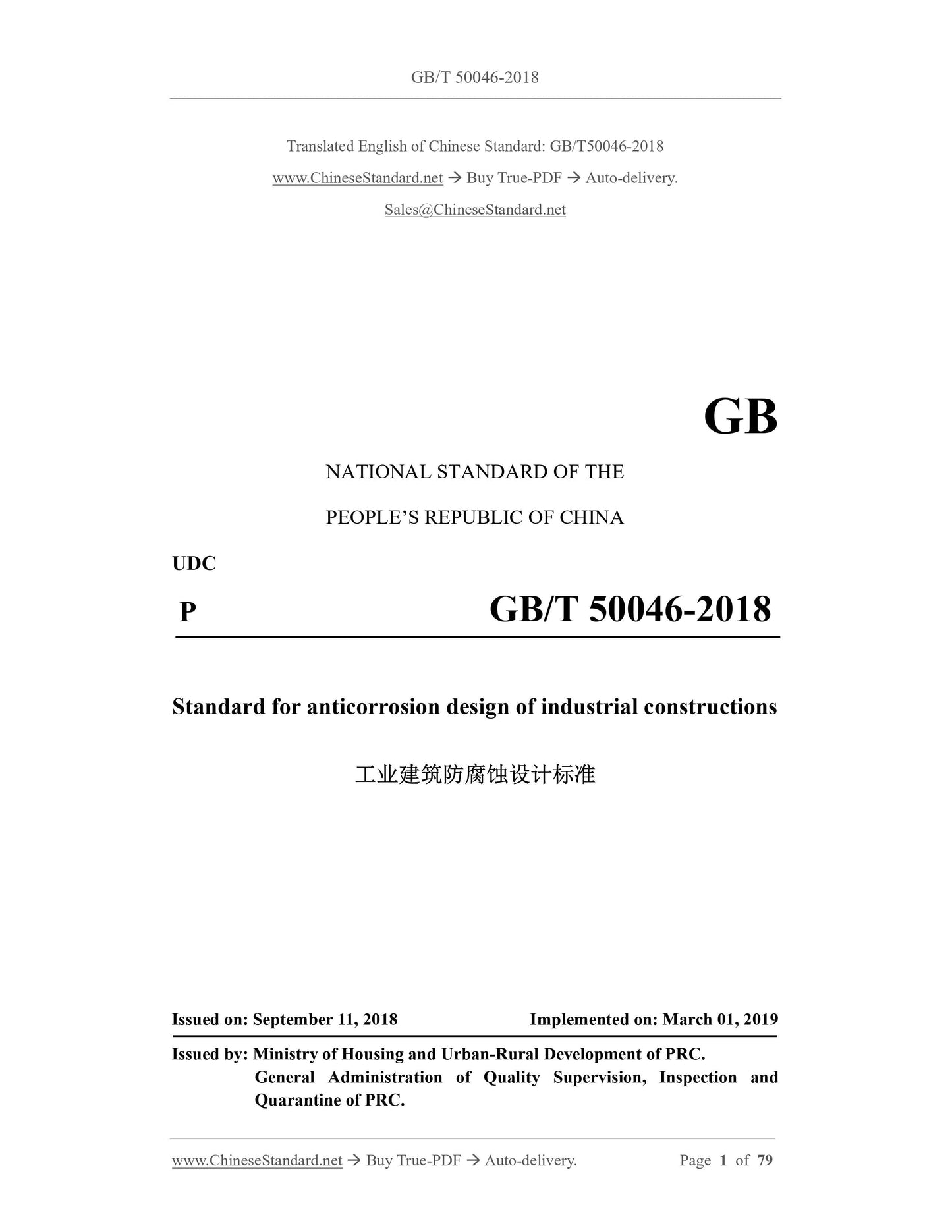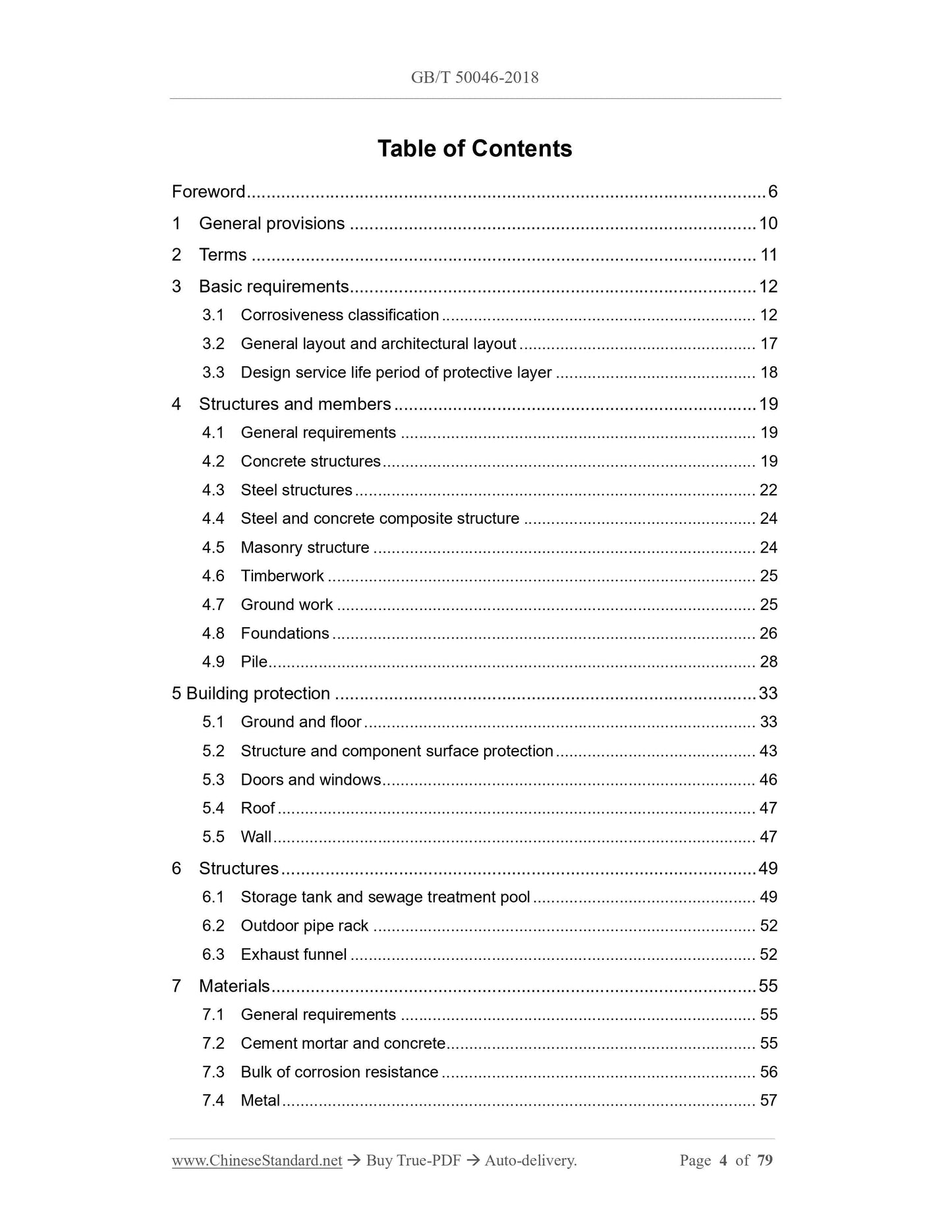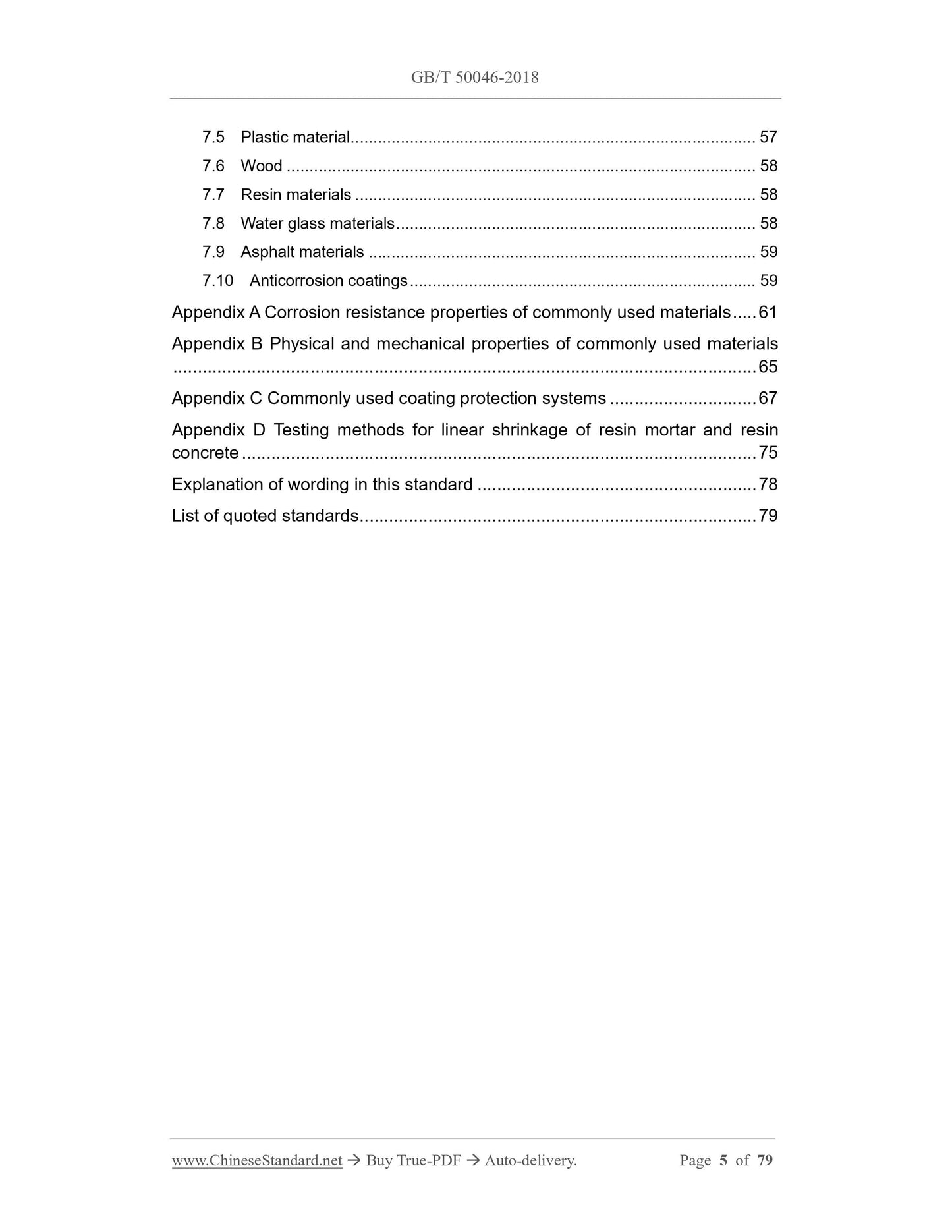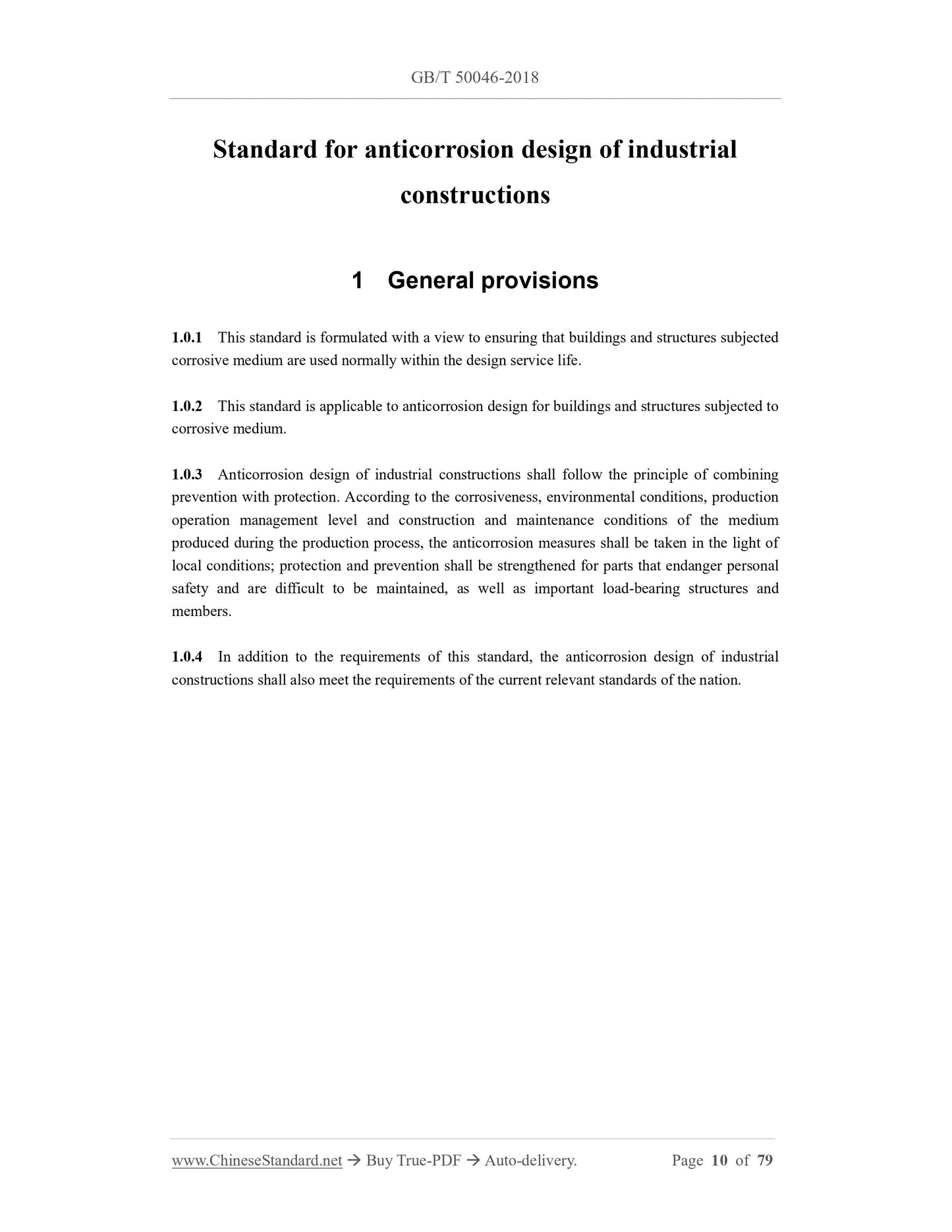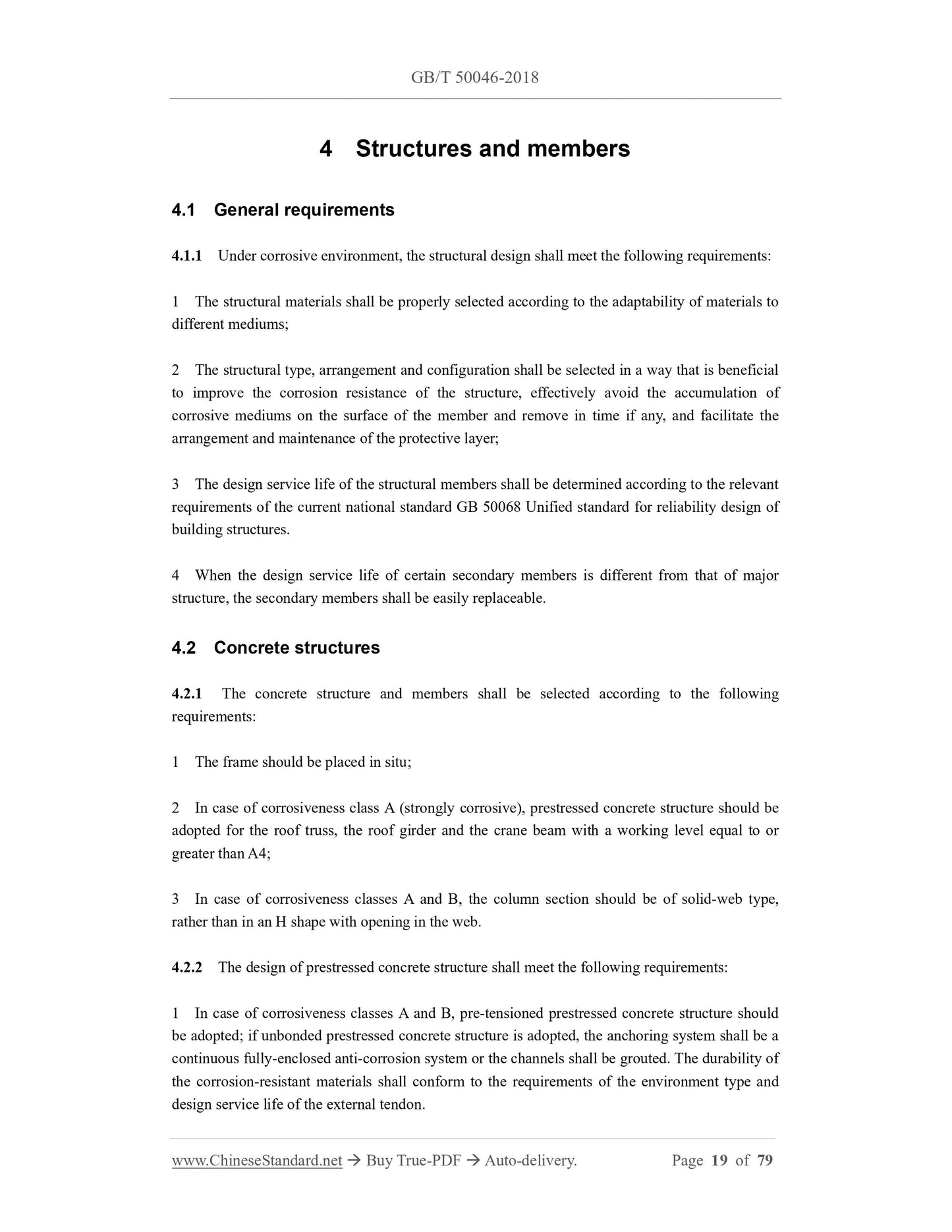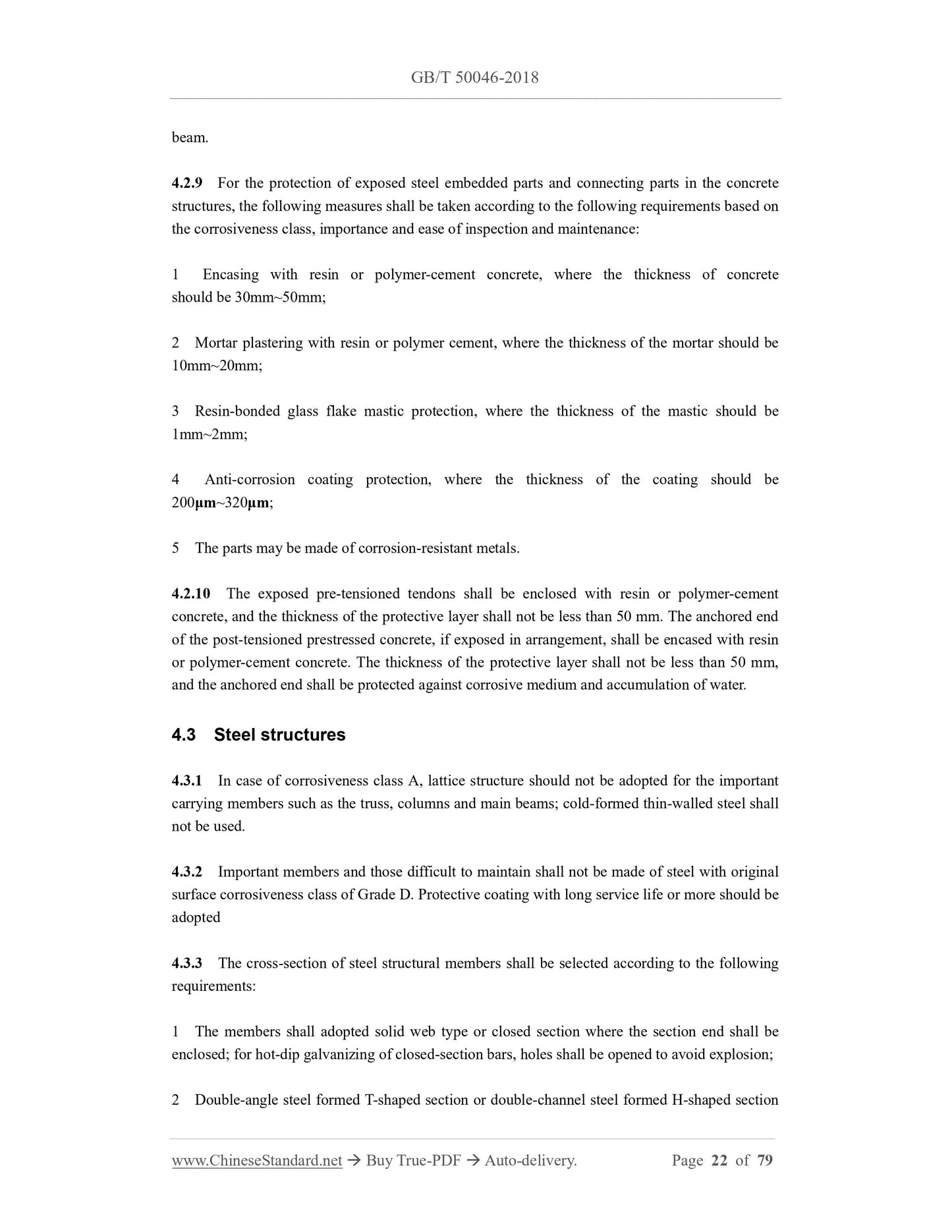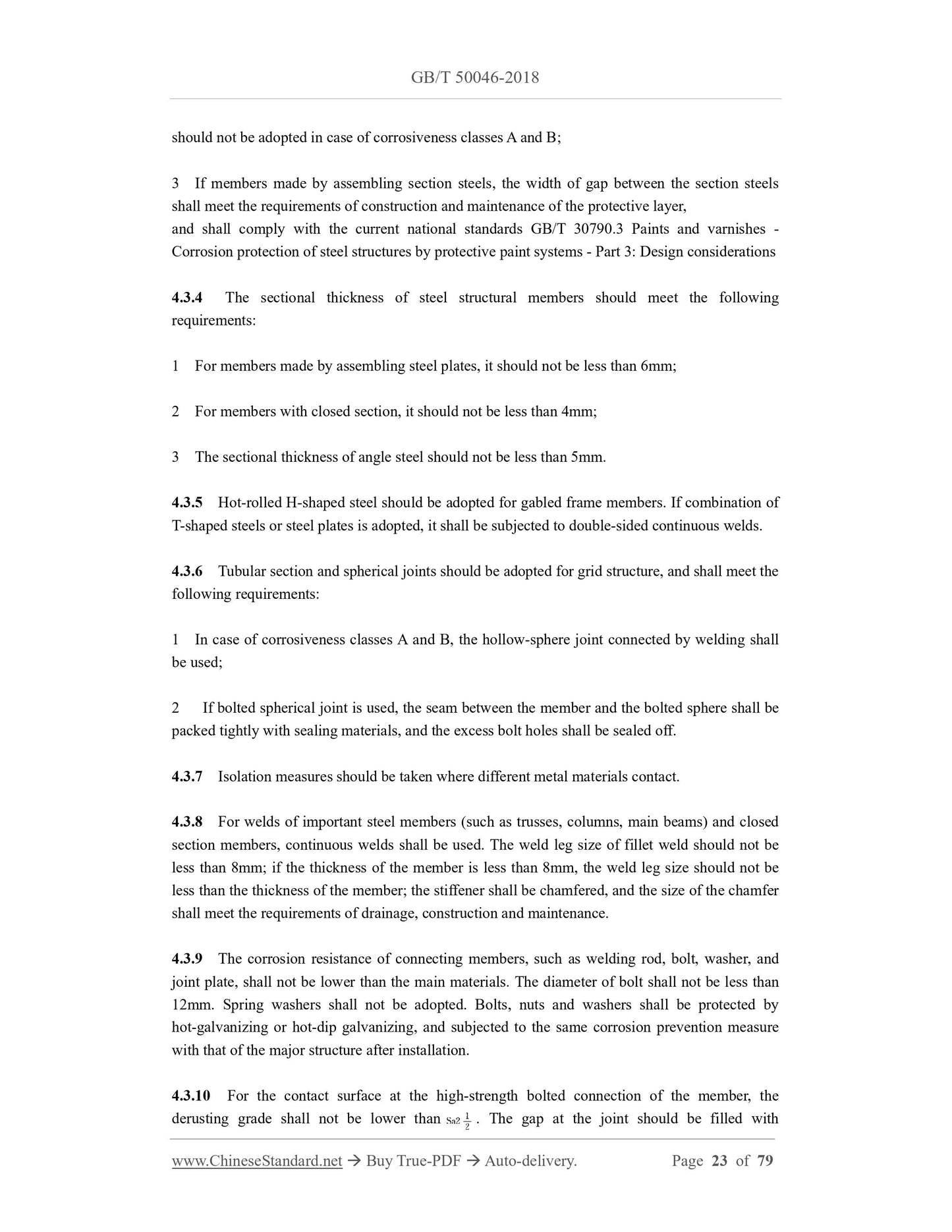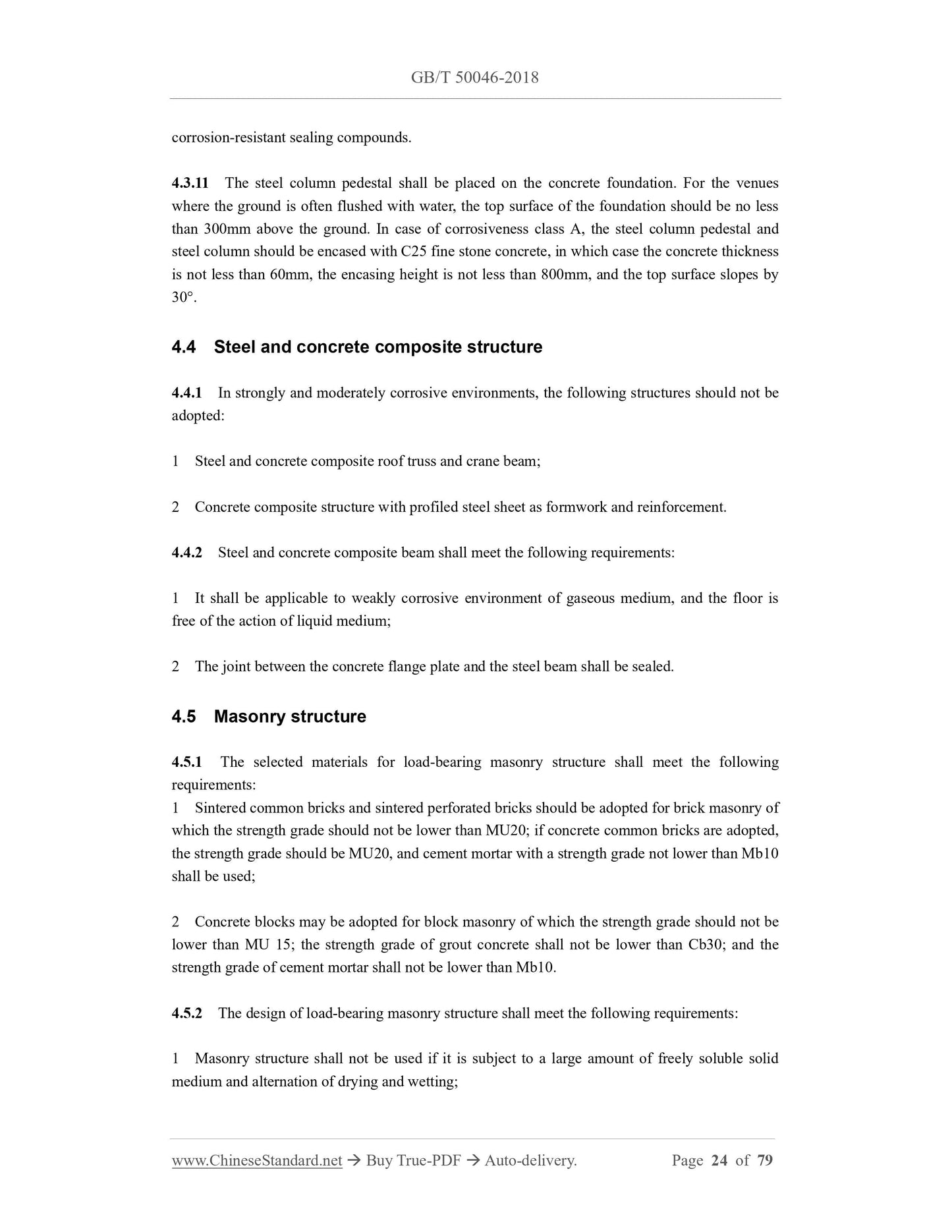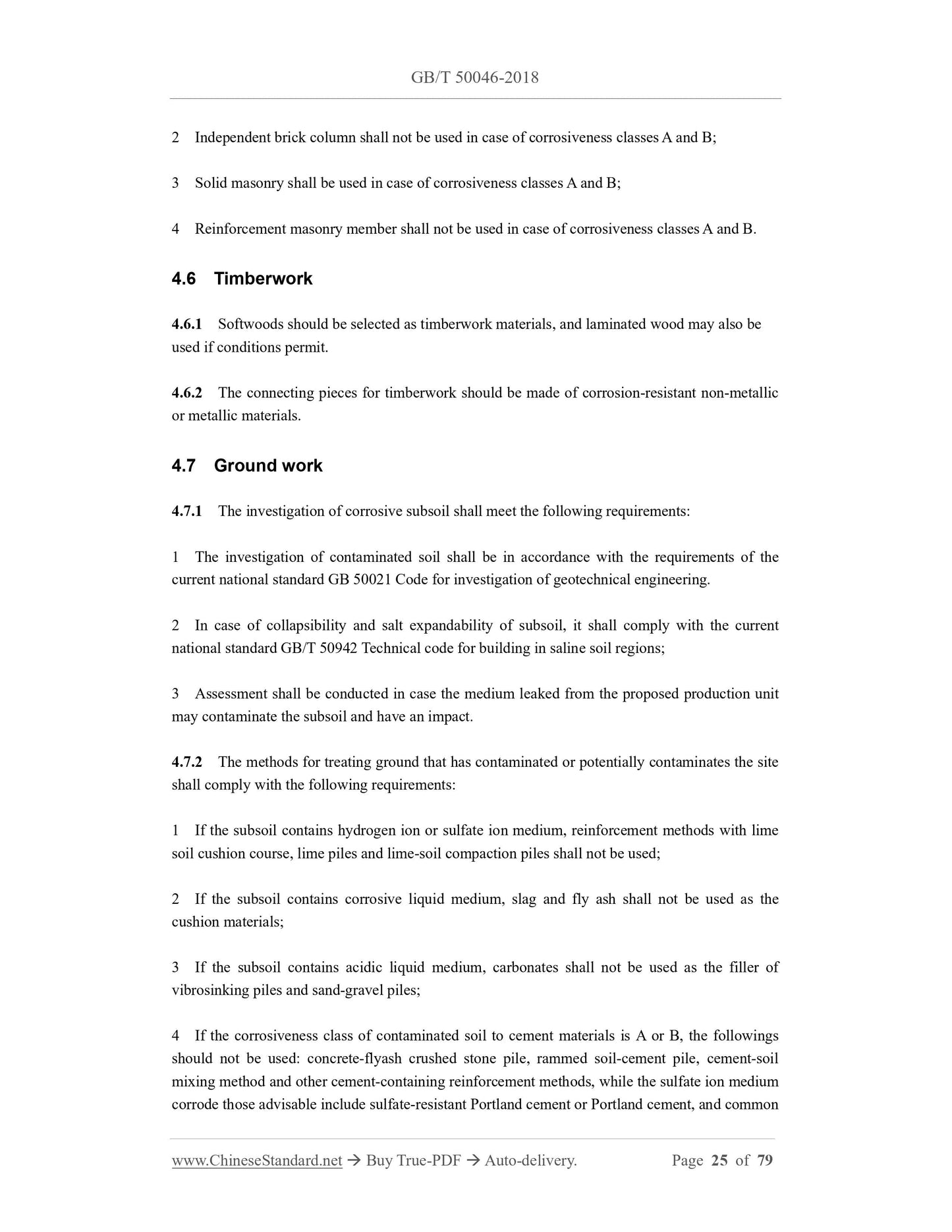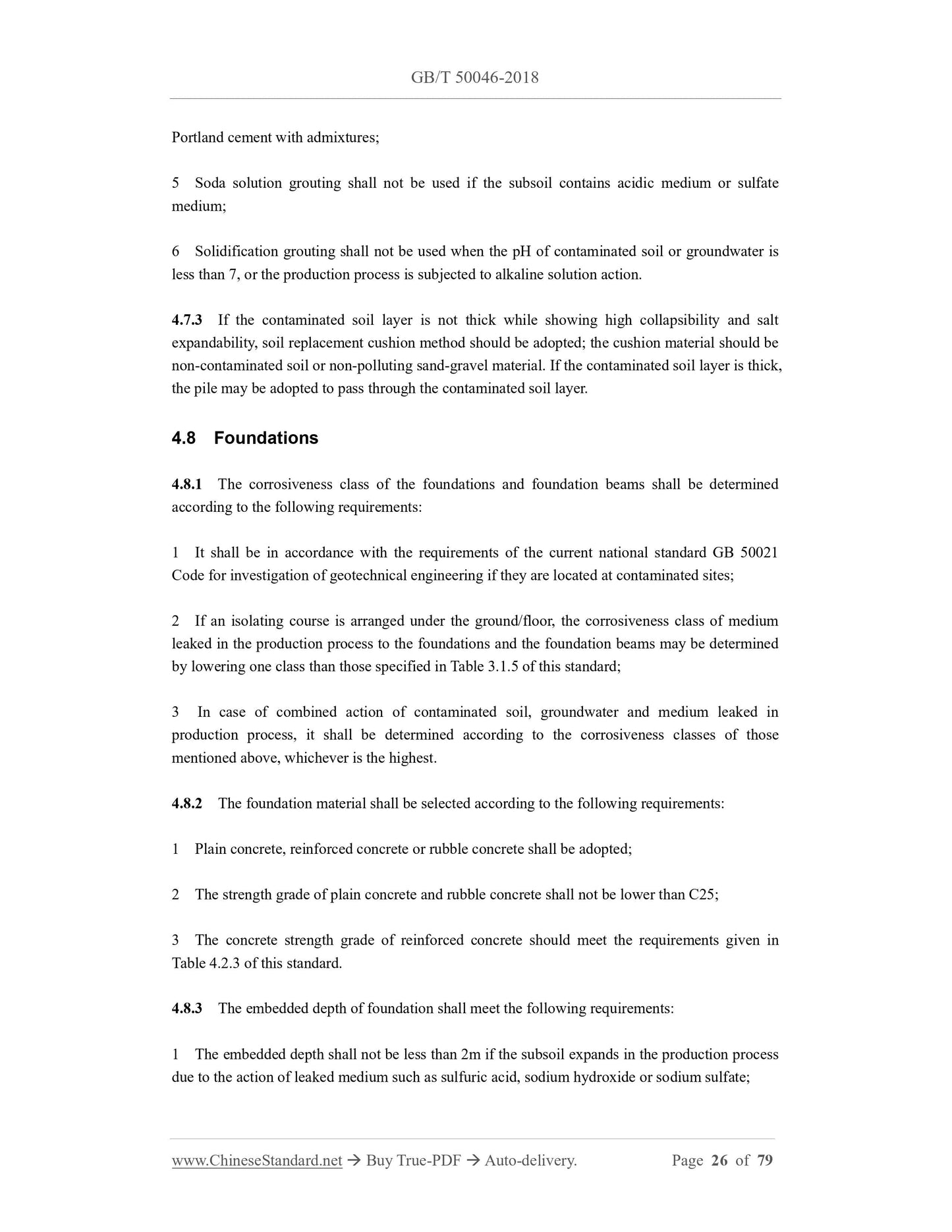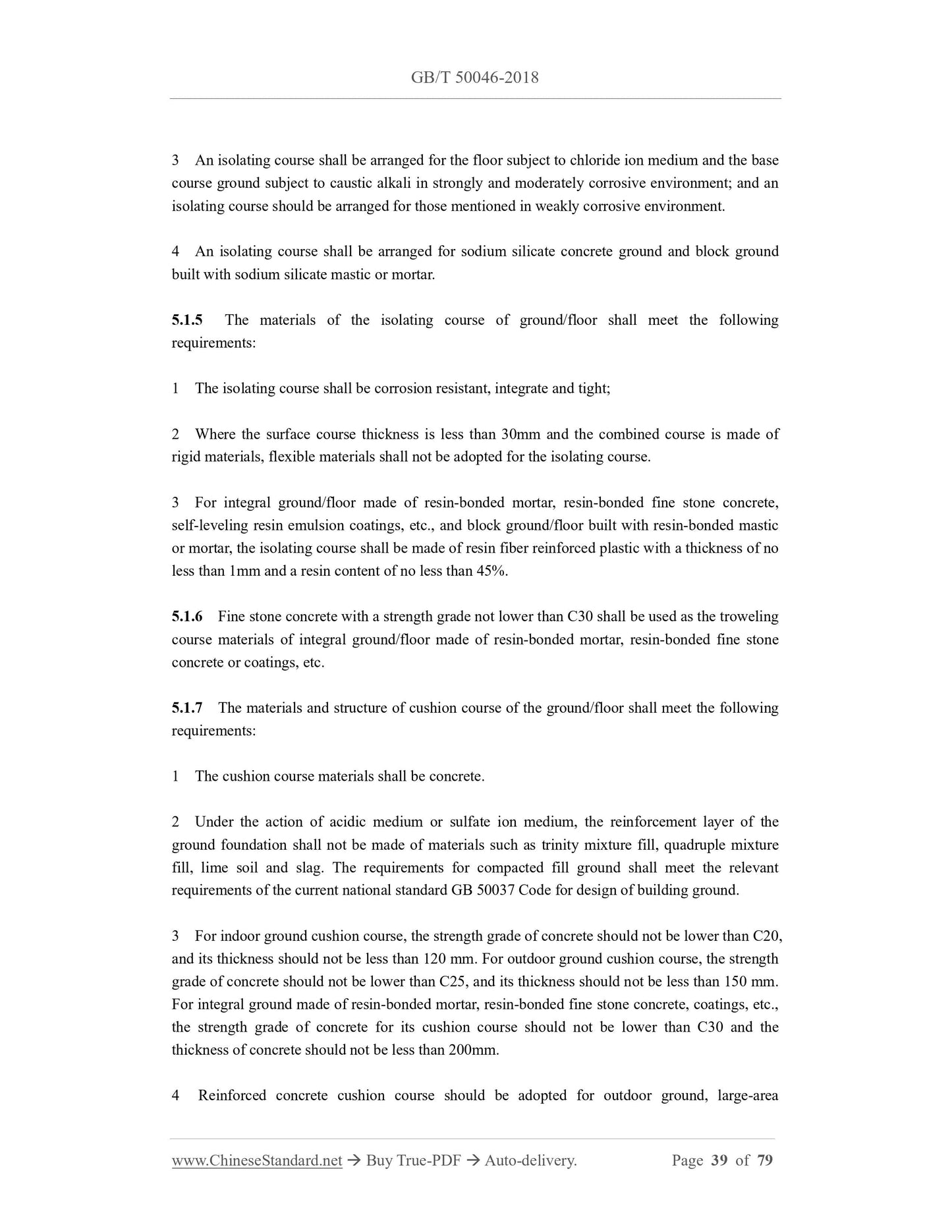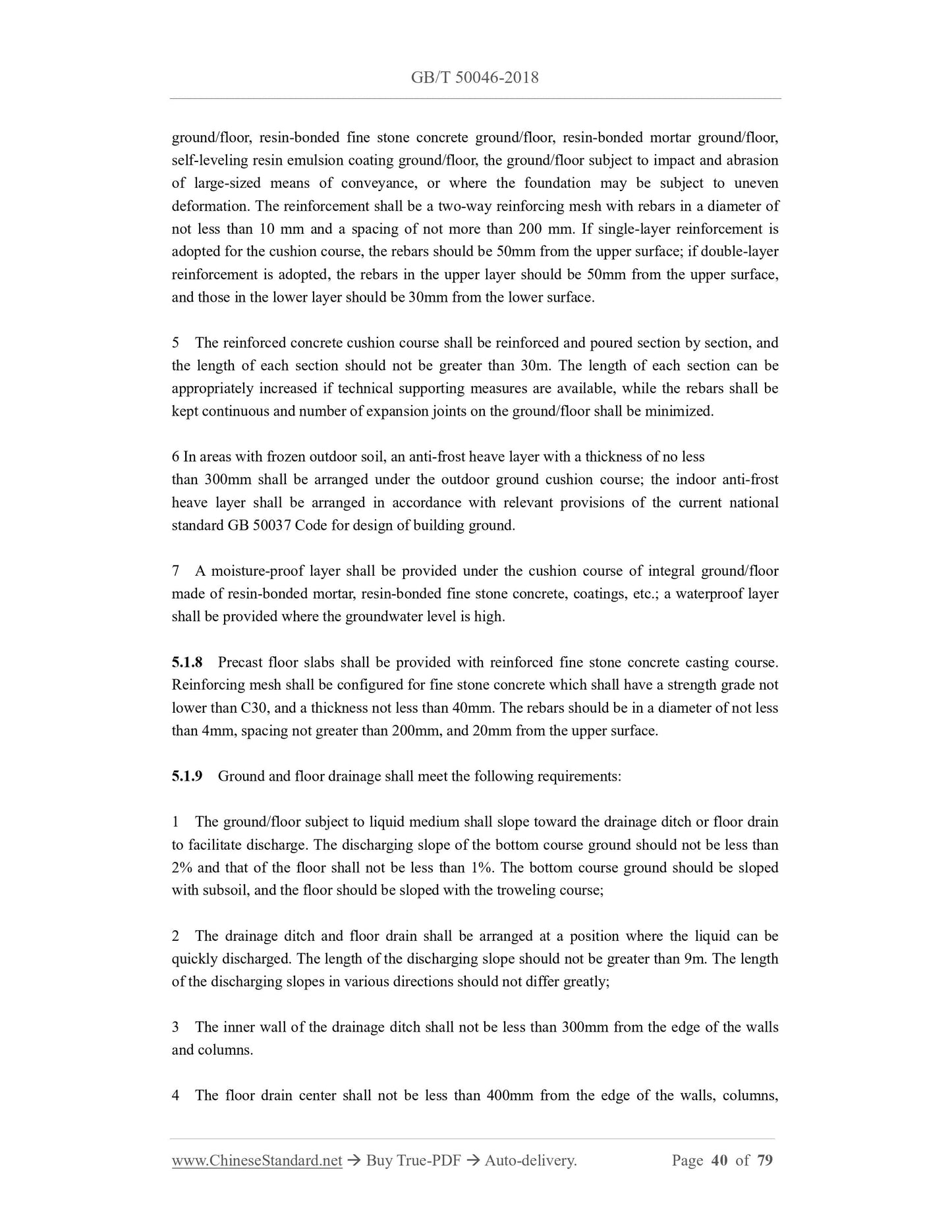1
/
of
12
www.ChineseStandard.us -- Field Test Asia Pte. Ltd.
GB/T 50046-2018 English PDF (GB/T50046-2018)
GB/T 50046-2018 English PDF (GB/T50046-2018)
Regular price
$995.00
Regular price
Sale price
$995.00
Unit price
/
per
Shipping calculated at checkout.
Couldn't load pickup availability
GB/T 50046-2018: Standard for anticorrosion design of industrial constructions
Delivery: 9 seconds. Download (and Email) true-PDF + Invoice.Get Quotation: Click GB/T 50046-2018 (Self-service in 1-minute)
Newer / historical versions: GB/T 50046-2018
Preview True-PDF
Scope
1.0.1 This standard is formulated with a view to ensuring that buildings and structures subjectedcorrosive medium are used normally within the design service life.
1.0.2 This standard is applicable to anticorrosion design for buildings and structures subjected to
corrosive medium.
1.0.3 Anticorrosion design of industrial constructions shall follow the principle of combining
prevention with protection. According to the corrosiveness, environmental conditions, production
operation management level and construction and maintenance conditions of the medium
produced during the production process, the anticorrosion measures shall be taken in the light of
local conditions; protection and prevention shall be strengthened for parts that endanger personal
safety and are difficult to be maintained, as well as important load-bearing structures and
members.
1.0.4 In addition to the requirements of this standard, the anticorrosion design of industrial
constructions shall also meet the requirements of the current relevant standards of the nation.
Basic Data
| Standard ID | GB/T 50046-2018 (GB/T50046-2018) |
| Description (Translated English) | Standard for anticorrosion design of industrial constructions |
| Sector / Industry | National Standard (Recommended) |
| Classification of Chinese Standard | P34 |
| Classification of International Standard | 91.040.20 |
| Word Count Estimation | 137,198 |
| Date of Issue | 2018-09-11 |
| Date of Implementation | 2019-03-01 |
| Older Standard (superseded by this standard) | GB 50046-2008 |
| Quoted Standard | GB 50021; GB 50037; GB 50051; GB 50068; GB/T 50082; GB 50212; GB/T 50942; GB/T 5210; GB/T 9286; GB/T 30790.3; JGJ 94 |
| Regulation (derived from) | Ministry of Housing and Urban-Rural Development Announcement 2018 No.205 |
| Issuing agency(ies) | Ministry of Housing and Urban-Rural Development of the People's Republic of China; State Administration for Market Regulation |
| Summary | This standard applies to anti-corrosion design of buildings and structures subjected to corrosive media. |
Share
